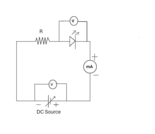
Circuit Diagram LED Characteristics
- Subject:
- Physics
- Material Type:
- Student Guide
- Author:
- Vijay Deshmukh
- Date Added:
- 05/23/2024

Circuit Diagram LED Characteristics

The circular saw is an important tool/piece of equipment used in Building Construction. In this set of lessons, students will identify the parts of a circular saw, describe the safety hazards associated with the circular saw, and demonstrate the steps to operating the circular saw. This lesson will consist of a PowerPoint lecture, notes, video, teacher demonstration, student demonstration, safety quiz, and student performance assessment.

How to create citations in either APA or MLA format using Microsoft Word (365).

Los objetivos de aprendizaje sobre los invertebrados buscan adentrarnos en el apasionante mundo de estos animales sin columna vertebral, guiándonos hacia una comprensión profunda de su diversidad, características, roles ecológicos y la importancia de su conservación.

Los objetivos de aprendizaje sobre los invertebrados buscan adentrarnos en el apasionante mundo de estos animales sin columna vertebral, guiándonos hacia una comprensión profunda de su diversidad, características, roles ecológicos y la importancia de su conservación.

This is a template for an inquiry project in a senior level early childhood course.

This may be used as an online classroom netiquette

This will set a standard for student's academic integrity and dishonesty in submitting their papers and/or presentations.

Collaborative and sharing work between students from Portugal and Romania, in the context of environmental concerns. Bridge 21 Model.
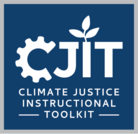
The primary goal of these resources and programming, created as part of a larger initiative to expand climate justice education at MIT, is to provide support to faculty members and instructors across disciplines in integrating climate justice content and related instructional approaches into their courses.
The Toolkit houses a wide range of climate-justice-adaptable teaching modules, a starter guide for teaching climate justice, resources for students, and climate justice data sets that can serve as supportive tools to enhance teaching content and approaches.
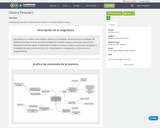
Contenido general de la materia Clinica Tutorial I de la licenciatura en física.
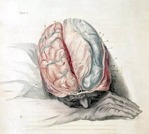
The American Association of Anatomy (AAA) has put forth learning objectives for the four preclinical courses in the anatomical sciences. In conjunction, they have also provided a list of clinical syndromes and scenarios that medical students should understand during their preclinical studies. This resource uses these clinical syndromes as a guide to provide students with a quick reference to clinical syndromes covered in preclinical neuroanatomy. This is part one of three, addressing issues related to gross brain, embryology, and spinal cord functions.This project supported by the Touro OER Faculty Fellowship. Created by Stephanie Klinesmith, Department of Anatomy, Touro College of Osteopathic Medicine - Middletown Campus, 60 Prospect Ave, Middletown, NY, 10940. sklinesm@touro.edu

The American Association of Anatomy (AAA) has put forth learning objectives for the four preclinical courses in the anatomical sciences. In conjunction, they have also provided a list of clinical syndromes and scenarios that medical students should understand during their preclinical studies. This resource uses these clinical syndromes as a guide to provide students with a quick reference to clinical syndromes covered in preclinical neuroanatomy. This is part two of three, addressing issues related to the brainstem and cranial nerves.This project supported by the Touro OER Faculty Fellowship. Created by Stephanie Klinesmith, Department of Anatomy, Touro College of Osteopathic Medicine - Middletown Campus, 60 Prospect Ave, Middletown, NY, 10940. sklinesm@touro.edu
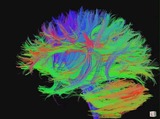
The American Association of Anatomy (AAA) has put forth learning objectives for the four preclinical courses in the anatomical sciences. In conjunction, they have also provided a list of clinical syndromes and scenarios that medical students should understand during their preclinical studies. This resource uses these clinical syndromes as a guide to provide students with a quick reference to clinical syndromes covered in preclinical neuroanatomy. This is part three of three, addressing issues related to the forebrain and cerebellum.This project supported by the Touro OER Faculty Fellowship. Created by Stephanie Klinesmith, Department of Anatomy, Touro College of Osteopathic Medicine - Middletown Campus, 60 Prospect Ave, Middletown, NY, 10940. sklinesm@touro.edu
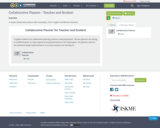
A simple collaborative planner with example(s). Text in English and Bahasa Indonesia.
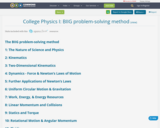
The BIIG problem-solving method is unique in that it forces us to concentrate on decoding a real-world word problem completely into meaningful parts and aids us in finding and applying the right formula to easily arrive at the correct solution. As desired, it places less emphasis on the memorization of factual detail and more emphasis on the understanding of concepts. Evidently, this method is beneficial in many ways as it aids students in honing skills in critical thinking, logical approach and attention to detail. As a method for organizing information it helps students avoid errors and sets them on a path to succeed. As long as the numbers are “buddied up” with their units, “identified” by the appropriate variables, “isolated” within the context, and the answer is presented “gourmet”, or explained in terms of the original question, finding a solution to any complex problem will become seamless, understandable and enjoyable. This innovation in science education fosters a passion for learning and serves as a foundation for a new paradigm for problem-solving in any discipline of science worldwide.
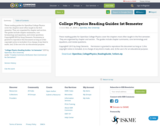
These reading guides for OpenStax College Physics cover the chapters most often taught in the first semester. They are organized by chapter and section. The guides include chapter summaries, core terminology and equations, and review questions.
Copyright© 2015 by Greg Clements. Permission is granted to reproduce this document as long as 1) this copyright notice is included, 2) no charge of any kind is made, and, 3) the use is for an educational purpose.
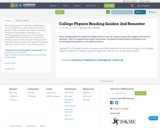
These reading guides for OpenStax College Physics cover the chapters most often taught in the second semester. They are organized by chapter and section. The guides include chapter summaries, core terminology and equations, and review questions.
Copyright© 2015 by Greg Clements. Permission is granted to reproduce this document as long as 1) this copyright notice is included, 2) no charge of any kind is made, and, 3) the use is for an educational purpose.
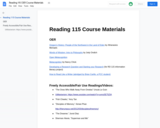
College Reading OER Course Materials
RD 155
Course Description
Focuses on expanding reading frequency and effectively reading complex college level texts; Emphasizes comprehension strategies, critical reading and thinking skills, information literacy, vocabulary development, student success strategies and adapting reading rate to different reading tasks.
Improve reading rate, vocabulary and comprehension. Includes formation of efficient
reading habits, vocabulary development, inferential and critical reading, and adapting
reading rate to different reading tasks.
Intended Outcomes for the course
1. Proficiently use stages of reading—previewing, reading, review-and reading strategies in order to improve comprehension, control concentration, and increase persistence and retention in a variety of academic and non-academic reading tasks. Refine connections between text, the student’s life, student’s knowledge of the world, and other texts. Examine interactions between relationship, richness, structure, style, vocabulary, and purpose within complex texts. Increase reading frequency. Adjust reading rate to the nature of the material.
2. Advance and broaden use of vocabulary development strategies to learn and use new words including discipline-specific vocabulary in listening, speaking and writing. Advance word parts study.
3. Refine written evaluation, analysis, and reflection in response to various texts.
4. Analyze texts in order to identify and articulate explicit and implied main idea and major details, distinguish fact from opinion, determine the author’s and reader’s purpose and bias, and distinguish between literal and figurative meaning in a variety of increasingly complex academic and non-academic reading materials. Make accurate inferences and rely on information provided in text to substantiate thinking. Identify and evaluate complex points of view in different texts. Cultivate flexibility and skepticism about author’s and reader’s perspectives.
5. Use library resources to formulate a research query and select appropriate sources of information. Use critical thinking to evaluate increasingly complex and diverse information and sources for academic and lifelong learning. Identify and make use of steps in the research process.
6. Exhibit habits and contribute to academic success, including engagement and intellectual curiosity. Employ active learning and study strategies for academic success. Use campus support services and other learning resources to help meet academic goals. Participate in a classroom learning community in a respective and responsive manner.
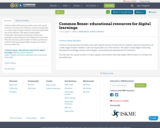
Common Sense Education provides users with a great amount of resources for students, teachers and parents on a wide range of topics related to safe and responsible use of the Internet. The topics include digital citizenship, educational technology reviews and strategies, and professional development for educators.
This site also has a great number of videos, guides and activities that help explain difficult topics in a simple and accessible way.